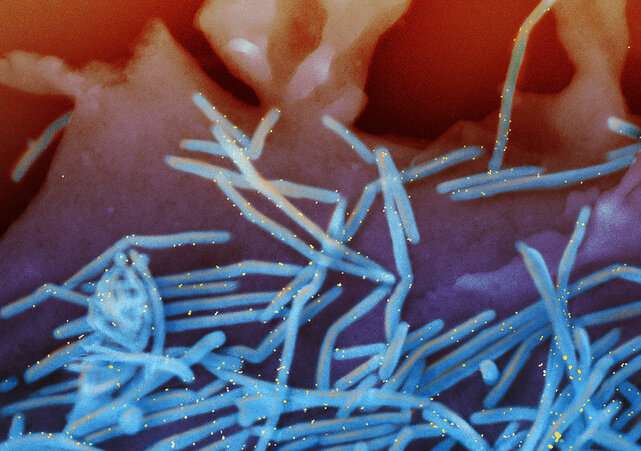This article has been reviewed according to Science X's editorial process and policies. Editors have highlighted the following attributes while ensuring the content's credibility:
fact-checked
peer-reviewed publication
trusted source
proofread
Several pre-existing RSV lineages powered the 2022 virus surge, suggests study

Late last year, thousands of children across the United States were hospitalized with respiratory syncytial virus (RSV), but unlike previous RSV surges, this one affected a larger number of people and a broader range of age groups, including older children. As cases climbed faster and earlier in the season than in previous years, researchers wondered whether a fast-spreading RSV variant might be driving this unusual pattern of cases.
To learn what was causing the upsurge, a team of scientists and clinical collaborators from Massachusetts General Hospital (MGH) and its outpatient practices in the greater Boston area began collecting specimens from patients diagnosed with RSV and sharing them with scientists at the Broad Institute of MIT and Harvard, who sequenced the viral genomes. They wanted to see if characteristics of the virus, such as the emergence of a new variant, contributed to the severity of the surge.
Their analysis, initially released as a preprint on medRxiv and now published in the New England Journal of Medicine, revealed that multiple lineages of RSV, rather than a single, highly transmissible variant, drove the rapid rise in cases. The researchers also found that the lineages had been circulating well before the start of the pandemic.
"What was really special about this study was how clear the finding was and how quickly we were able to do it. We were working with our colleagues at MGH within just a week or two of the surge beginning," said Jacob Lemieux, an associate member of the Broad's Infectious Disease and Microbiome Program and a physician-investigator in the Division of Infectious Disease at MGH.
Lemieux is co-senior author on the study along with Broad institute scientist Bronwyn MacInnis and institute member Pardis Sabeti.
"When surges of infections arrive like this, we need to move quickly to get the genetic data from residual diagnostic samples to provide public health and clinical leaders with the intelligence that helps guide their response," said MacInnis. "If we were looking at a highly transmissible or threatening variant of RSV underlying the surge, that would have changed the public health understanding and response to it."
Cross-country comparison
At the time, the only other available RSV genomes from the fall 2022 surge, from patients in Seattle, had been sequenced by scientists at the University of Washington. The Broad team compared the viral genomes from Washington and Massachusetts and found similar genetic signatures and ancestry, revealing that the same lineages were driving the surge across the country.
"I think we all were under the suspicion that there would be a single RSV variant underlying the surge, but when we built the phylogenetic tree, we saw that wasn't the case," said Gage Moreno, a postdoctoral associate at the Broad and a co-first author on the study.
"Within the phylogenetic clusters of closely related RSV sequences, there was significant genetic diversity, indicating that these lineages had been circulating—and evolving—for years prior to the COVID-19 pandemic," said Brittany Petros, an MD-Ph.D. student in the Sabeti lab and a co-first author on the study. "This finding further dispelled the notion that a novel RSV variant was underlying the surge."
Scientists have proposed a few hypotheses to explain the spike in cases, which have less to do with the virus and more with the people it infects. A leading one suggests that personal protective behaviors during the COVID-19 pandemic, such as distancing and masking, may have reduced exposure and population immunity to RSV. Toddlers and other young children in particular, who commonly get infected with the virus, may have never been exposed to RSV in 2020 and 2021, and are interacting more now than during the height of the pandemic.
Lemieux said it's not clear whether this hypothesis is right, but added, "What we can say is that it was really surprising that multiple lineages were associated with this surge, and that it seems to be the case across the U.S."
The investigators are now studying the role of viral and host immunological factors in the spread of RSV to better understand the causes of the surge.
More information: Gordon Adams et al, Viral Lineages in the 2022 RSV Surge in the United States, New England Journal of Medicine (2023). DOI: 10.1056/NEJMc2216153. On medRxiv: DOI: 10.1101/2023.01.04.23284195





















